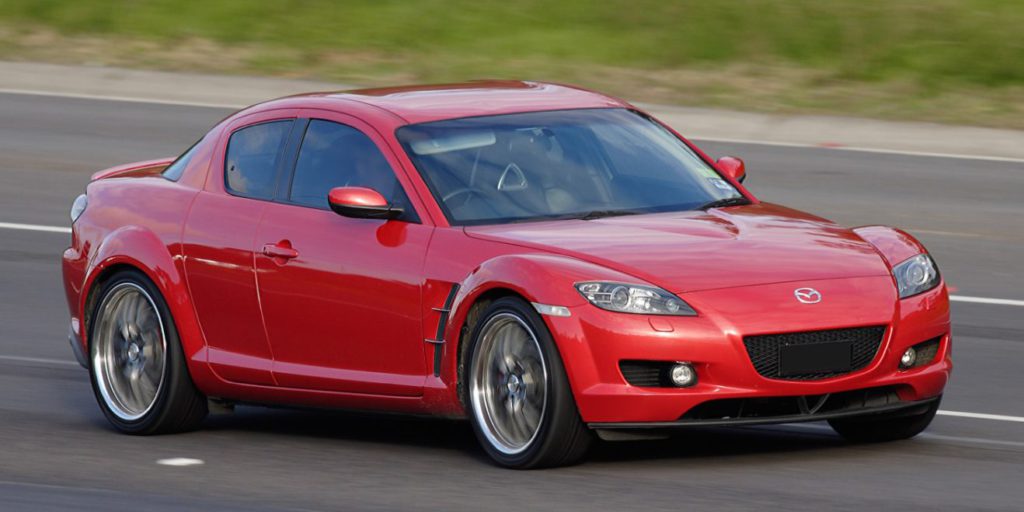The Mazda RX-8 sports car had its first public display at the North American International motor show in 2001. It went into production the following year, and ran until 2012. Mazda withdrew new sales of the RX-8 from Europe in 2010 as it failed to meet Euro 5 emission standards.
The RX-8 stands out from the crowd with its rotary Wankel engine. This engine works by converting pressure into a rotating motion and allowed the car to produce between 190 and 238 hp from its modest 1.3cc engine.
Rotary engines are barrel-shaped internal combustion engines (ICE). They have rounded triangular rotors that spin around a shaft. This action pumps fuel and air into the spaces between the rotor and interior walls where they ignite. The rapid explosion turns the rotors, generating the power. The engine works in the same way as a normal ICE engine with far fewer parts. This makes the engine much smaller and lighter.
The rotary engine is favoured in small aircrafts and motorbikes due its lighter weight and compact nature. The rotary engine used in the Mazda RX-8 was the last of its kind. No other manufacturer currently uses this technology.
Advantages:
- High power to weight ratio compared to normal ICE
- Able to reach higher revolutions per minute – a characteristic loved by car enthusiasts
- Operates with almost no vibration delivering a smoother ride
- Cheaper to produce as the engine contains fewer parts
Disadvantages:
- Poor fuel economy
- High emissions as the engine does not completely burn the fuel-air mixture
Since January 2018, the retail market shows steady values. The Mazda RX-8 continues to offer affordable sports car looks without the sports car price tag. Over the last 12 months, Glass’s data shows the average sold price in the retail market was £2,969.
There have been suggestions that the rotary engine will make a return. Journalists continue to speculate that Mazda will combine this technology with an electric motor, with the Wankel engine working as a range extender. However, Mazda continues to remain tight-lipped about this. There is still a possibility that we will see this interesting engine make a return to UK roads in years to come.

 Close
Close